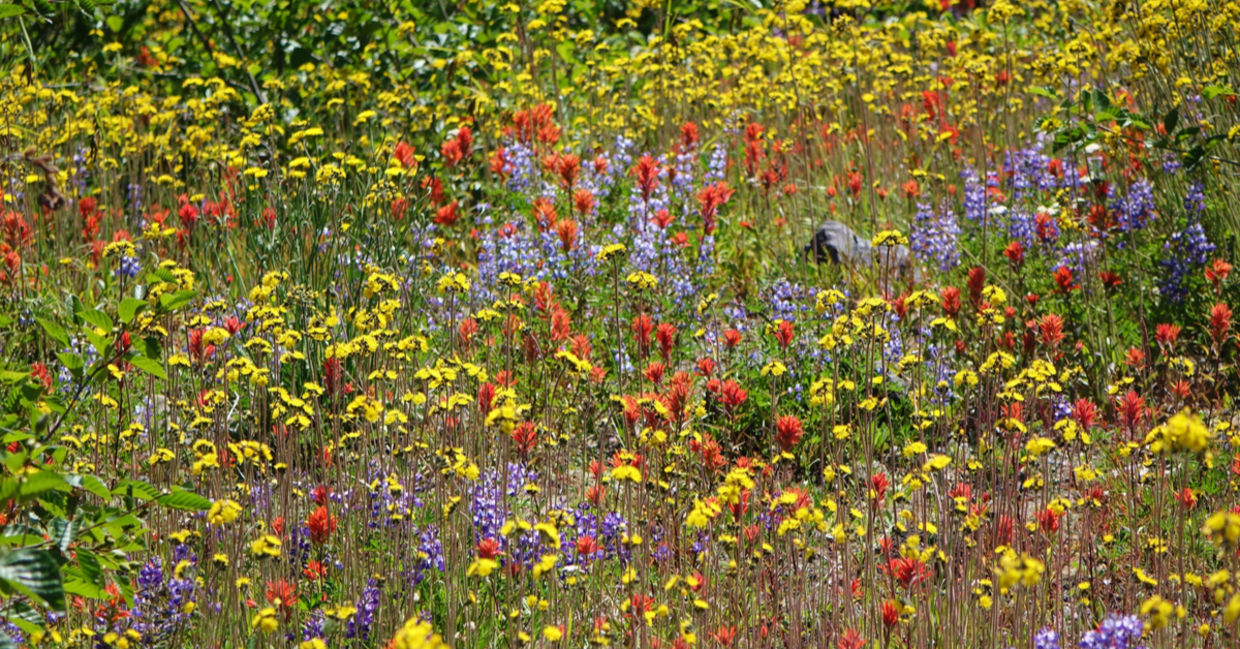
(Dan Lewis / Shutterstock.com)
While driving through the fields of Switzerland, you may come across neatly tailored stripes of bright red poppies or radiant blue cornflowers planted amongst the crops in the countryside. Beautiful as they may be, these wildflowers serve as a practical, environmentally-forward approach to agriculture that may hold the answer to reducing pesticides for good.
Swiss farmers, instead of using pesticides, have opted for a more natural way of preventing insects from infecting their crops. Their answer? Wildflowers. Scientists, working with farmers, have discovered a technique that uses tailored sections of wildflowers to attract pest-eating insects, reducing the need to use pesticides to protect crops.
The concept first came about as a result of work undertaken by Swiss researchers, Matthias Albrecht and Matthias Tschumi. Their research comes as a result of a growing public demand and political pressure to reduce pesticide use due to its harmful effects on human health and the environment.
The Swiss aren’t the only ones taking action toward a more sustainable approach to agriculture. The UK-based ASSIST (Achieving Sustainable Agricultural Systems) programme has now taken the idea a step further.
ASSIST represents a £11 million project funded by UK government research looking to develop more sustainable ways to feed the growing global population while minimizing the environmental impact. In their project, the first of its kind in the UK, scientists over the next five years will examine the effectiveness of wildflowers as a way of controlling pests.
Scientists are working together with farmers to sow flower strips on a number of commercial farms. Farmers have planted flowers such as oxeye daisy, red clover, common knapweed and wild carrot on 15 farms across central and eastern England. They will test this approach with a focus on supporting diverse communities of beneficial predatory and parasitic insects that kill pests.
So far, their research has demonstrated that more complex communities of predators and parasitoids create a more effective way of controlling pests. Sowing certain grasses and wildflowers, farmers can attract a higher diversity of important predators and crop pollinators such as ground beetles, parasitic wasps, and hoverflies.
For example, many parasitic wasps need access to open flowers in order to feed on pollen and nectar. Otherwise, they will not have the ability to lay as many eggs, which leads to a dramatic reduction in their population. Planting more flowers, the wasps have ample access to food and their population can flourish.
With a current worldwide population of nearly 7 billion people, projected to grow to 10 billion by 2050, scientists must come up with new ways to grow more food with less environmental impact. Projects such as these give way to ideas of meeting agricultural demands while coming up with new strategies for sustainable crop protection, safer to us and the world we live in.
YOU MIGHT ALSO LIKE:
Farmers Forgo Pesticides and Use Ducks to Grow Crops
7 Urban Farming Initiatives to Inspire Your Inner Gardener
This DIY Growroom Makes Urban Farming as Easy as 1, 2, 3







